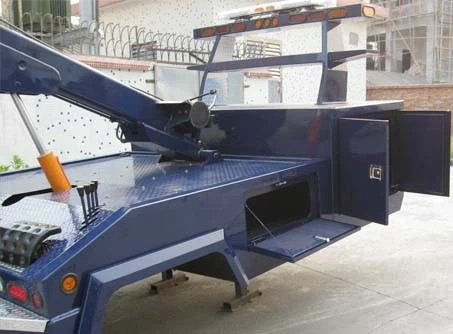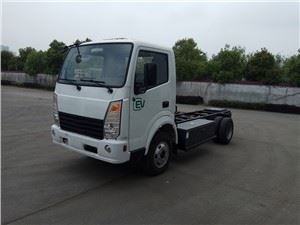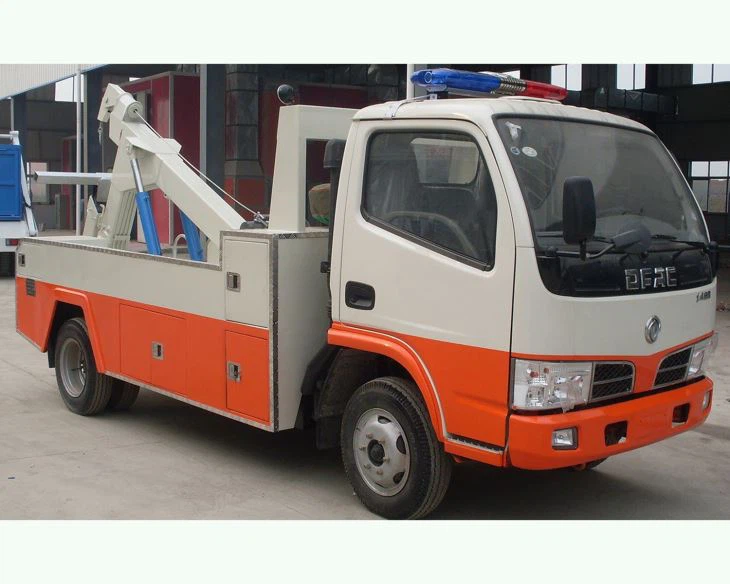Comprehensive Guide to Vacuum Truck Specifications

A vacuum truck is a specialized vehicle designed for suctioning liquids, sludge, and other materials. They are commonly used in industrial and municipal applications for waste management, emergency response, and more. Understanding vacuum truck specifications is crucial for selecting the right equipment for your needs. This article will cover everything from the types of vacuum trucks to their key specifications, common applications, and maintenance tips.
Understanding Vacuum Trucks
What is a Vacuum Truck?
A vacuum truck is equipped with a vacuum system that allows it to suck up materials like liquids, sludge, and even solid waste. These trucks are used extensively in industries such as sewage management, construction, and oil & gas. They come with various tank sizes and configurations to accommodate different types of materials.
Types of Vacuum Trucks
1. Liquid Vacuum Trucks
These trucks are designed to handle liquids such as sewage, wastewater, and other fluid materials. They are typically equipped with a pump and a large storage tank.
2. Sludge Vacuum Trucks
Sludge vacuum trucks are specialized for thick, viscous materials. They have powerful suction capabilities and often come with a more robust pumping system.
3. Dry Vacuum Trucks
These trucks are used for dry materials such as dust, debris, and other solids. They usually feature a different type of suction and storage system compared to liquid vacuum trucks.
4. Combination Vacuum Trucks
A combination vacuum truck can handle both liquid and dry materials. They come equipped with dual systems to perform versatile tasks.
Key Specifications of Vacuum Trucks
1. Tank Capacity
The tank capacity of a vacuum truck can range from 500 gallons to over 5,000 gallons. Selecting the right capacity depends on the volume of materials you expect to handle.
- Small Tank (500-1,200 gallons): Best for residential and light commercial use.
- Medium Tank (1,200-2,500 gallons): Suitable for municipal applications.
- Large Tank (2,500-5,000+ gallons): Ideal for heavy industrial use.
2. Pumping Capacity
The pumping capacity indicates how quickly a vacuum truck can load or unload materials. This capacity is measured in gallons per minute (GPM) and can vary significantly.
- Low Capacity (30-50 GPM): Suitable for lighter applications.
- Medium Capacity (50-100 GPM): Perfect for municipal and mid-sized commercial tasks.
- High Capacity (100+ GPM): Necessary for industrial-scale operations.
3. Engine Power
The engine power of vacuum trucks is another critical specification. Most vacuum trucks feature diesel engines, which offer high torque and reliability. Engine power is measured in horsepower (HP) or kilowatts (kW).
- Low Power (100-200 HP): Suitable for lighter applications.
- Medium Power (200-400 HP): Recommended for most municipal uses.
- High Power (400+ HP): Necessary for heavy industrial operations.
4. Hose Length and Diameter
The length and diameter of the vacuum hose can impact the efficiency of the suction process. Common hose diameters range from 3 to 6 inches, while lengths can vary from 50 to 100 feet.
- 3-inch diameter: Best for smaller applications.
- 4-inch diameter: Standard for most municipal and commercial uses.
- 5-6 inch diameter: Ideal for heavy industrial suction.
Common Uses of Vacuum Trucks
1. Sewer and Drain Cleaning
Vacuum trucks are often used for cleaning sewer systems and storm drains. They remove blockages and accumulate waste materials effectively, helping to maintain fluid flow.
2. Oil Field Operations

In the oil and gas industry, vacuum trucks play a crucial role in cleaning up spills, transporting drilling muds, and managing waste materials generated during extraction activities.
3. Environmental Cleanup
Vacuum trucks are essential in emergency spill responses. They quickly remove hazardous liquids or materials, minimizing environmental impact.
4. Construction Sites
These trucks are commonly used on construction sites to remove excess water, debris, and sludge, ensuring a clean working area.
Maintenance Tips for Vacuum Trucks
1. Regular Inspections
Conduct regular inspections of the truck’s mechanical and hydraulic systems. Look for leaks, worn hoses, and other signs of wear and tear. This preventive measure can save you significant repair costs.
2. Proper Cleaning
After every use, clean the tank and hoses thoroughly to prevent corrosion and buildup of materials. Depending on the materials handled, consider chemical cleaners specifically designed for vacuum trucks.
3. Monitor Fluid Levels
Regularly check fluid levels including engine oil, hydraulic fluid, and coolant. Maintaining proper fluid levels is vital for optimal performance.
4. Follow Manufacturer Guidelines
Always refer to the manufacturer’s maintenance guidelines for parts replacement and servicing intervals. This will ensure your vacuum truck operates reliably.
Cost Considerations When Buying a Vacuum Truck
1. Initial Purchase Price
The price of vacuum trucks can vary significantly depending on specifications and brand. On average, a new vacuum truck may cost between $100,000 and $300,000.
2. Operational Costs
Consider operational costs such as fuel, insurance, maintenance, and labor. The more powerful the truck, the more fuel-efficient it needs to be to keep operational costs low.
3. Financing Options
Evaluate financing options if full purchase isn’t feasible. Many companies offer leasing arrangements, which may be beneficial for smaller businesses.
Choosing the Right Vacuum Truck for Your Needs

1. Assess Your Requirements
Determine the materials you need to transport and the volume of work you anticipate. This foundational step will guide you in selecting the right specifications.
2. Consult with Experts

Consider consulting with manufacturers or industry experts to get recommendations based on your specific application requirements.
3. Test Drive Different Models
Whenever possible, test drive different models to find the one that best meets your operational needs. Pay attention to ease of use and comfort as operational hours can be extensive.
4. Read Reviews
Research customer reviews and testimonials. User feedback can provide valuable insights into the long-term performance of specific vacuum truck models.
FAQ Section
1. What is the average lifespan of a vacuum truck?
The average lifespan of a vacuum truck is typically around 10-12 years, depending on usage and maintenance practices.
2. Can vacuum trucks handle hazardous waste?
Yes, but specialized vacuum trucks designed to handle hazardous materials must be used. These trucks have additional safety and containment features.
3. How much does it cost to maintain a vacuum truck?
Maintenance costs can range from a few thousand dollars to tens of thousands annually, depending on usage and servicing frequency.
4. Are there regulations governing vacuum truck operations?
Yes, regulations may vary by region and application. It’s essential to comply with local, state, and federal regulations concerning waste disposal and environmental protections.
5. How do I choose the right size vacuum truck?
Choosing the right size depends on your specific needs, including the types and volumes of materials you handle and the job sites you operate in.
6. Will a used vacuum truck be a good investment?
A used vacuum truck can be a good investment if it has been well maintained and meets your operational needs. Be sure to have it inspected thoroughly before purchase.
